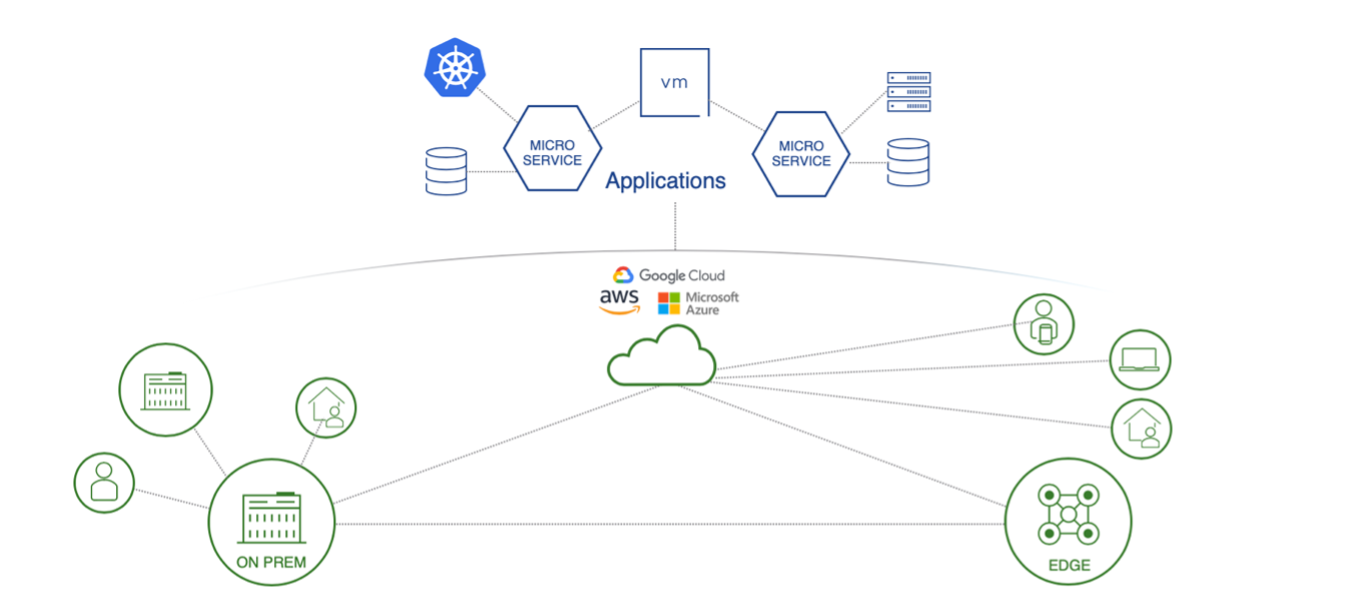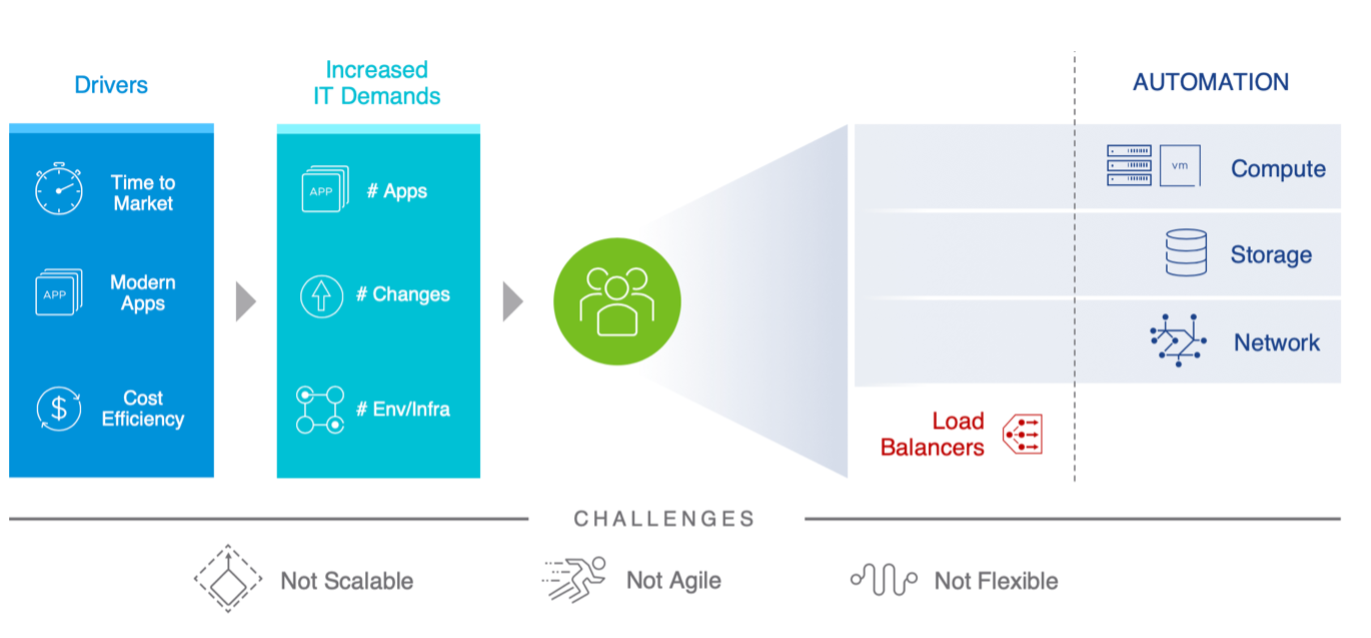Flexible infrastructure choices and application architectures are changing the way that modern enterprises run their distributed environments (see Figure 1). Enterprises have become application-centric, investing significant effort and resources in continuous delivery goals and DevOps practices in order to automate routine IT and operations tasks.
Hardware-based application delivery controllers (ADCs) have been the staple of application delivery in data centers for the last two decades. However, these legacy load balancing solutions aren’t keeping up with the changes in modern, dynamic capacity and automation needs. Legacy hardware-based ADCs have become inflexible in the face of changing requirements, delaying application rollouts and causing overspending and overprovisioning in many cases. Most enterprises experience the “do more with less but faster” challenges shown in Figure 2 when it comes to rolling out new applications or updates, which can often take weeks.
With aggressive continuous delivery goals and ever-greater customer expectations, businesses are pushing back against delays due to hardware provisioning and manual configurations of ADCs that slow time to market for application deployments and updates.

Figure 1: Computing today: Evolving app architectures and infrastructure heterogeneity.

Figure 2: Legacy hardware-based load balancing solutions are not keeping up with the modern pace of business.
Virtualized and Software-Defined Aren’t the Same Thing
As virtualization technology has advanced and matured over the past decade, many ADC vendors have begun to offer a virtualized version of their hardware-based appliances. Virtualized appliances enable ADC vendors to offer a lower cost alternative to their hardware-based appliances in a form factor that can be deployed on x86 servers. However, virtual appliances inherit most of the architectural debt (I.e., a control plane and data plane tightly coupled in an appliance) and are no better at solving many of the fundamental issues in modern data centers — such as inflexibility, overprovisioning, and management challenges — than hardware-based ADCs.
Instead, enterprises need flexible and agile application services that align with their continuous integration and development (CI/ CD) processes. Advances in the power of commodity x86 servers now enable software-defined principles to be applied to modern application services platforms.
Unlike a virtualized load-balancing appliance, a software-defined application services platform separates data and control planes to deliver application services beyond load balancing — real-time application analytics, security and monitoring, predictive autoscaling, and end-to-end automation — for Transport (Layer 4) to Application (Layer 7) layer services. This platform supports multi-cloud environments and provides software-defined application services with infrastructure-agnostic deployments (on bare metal servers, virtual machines (VMs), and containers) in on-premises data centers and private/public clouds.
Dig into the additional benefits of software-defined, multi-cloud load balancing in this easy-to-read guide, Multi-Cloud Load Balancing For Dummies, and learn how to:
- Deliver consistent services across multi-cloud environments
- Enable elastic on-demand autoscaling
- Automate routine application delivery tasks
- Gain real-time visibility and analytics
- Empower developers with self-service
- Simplify advanced security management
- Modernize microservices app delivery


Comments
0 Comments have been added so far